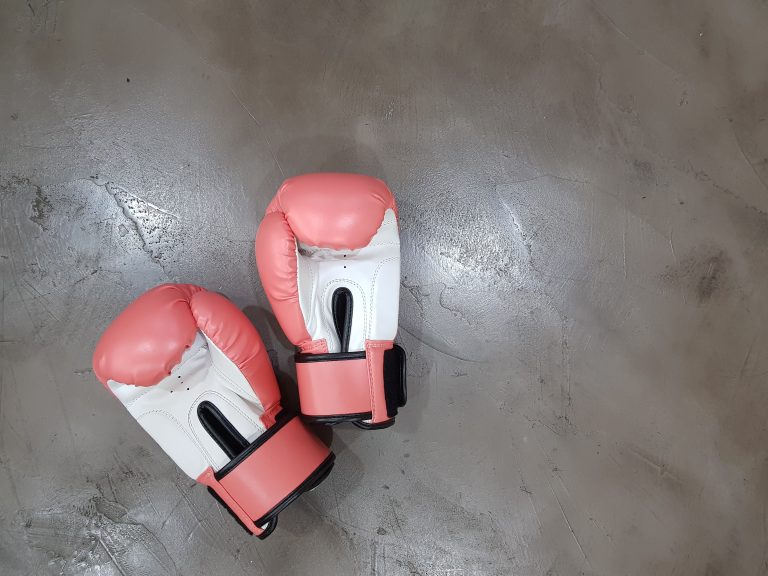What’s the Difference Between Karate and Taekwondo?
As martial arts go, karate and taekwondo are two of the most popular disciplines around the world. Both offer physical and mental benefits, with their unique cultures providing an engaging way to stay physically active. But what’s the difference between these two martial arts forms? Let’s take a closer look at karate and taekwondo.
Karate and Taekwondo are both martial arts, originating from different countries and traditions. Karate originated in Okinawa, Japan, with Taekwondo tracing its roots to Korea. Both martial arts forms offer physical, mental, and spiritual benefits. The Taiwanese Ministry of Education, for example, states that martial arts such as karate and taekwondo promote “builds up physical strength, enables the practitioners to defend themselves, cultivates calmness in mind and the ability to handle crises and enhances human spirit”.
Origin and Evolution of Karate and Taekwondo
The origins of karate trace back to Okinawa in Japan. A mixture of various martial arts that was practiced by farmers, as well as by Chinese slaves and immigrants who came to Okinawa to work in the sugar cane plantations. This type of fighting art was referred to as “te” which translates to “hand”. During the early 19th century, a style of te (karate) was developed by Sakukawa Kanga that focused on strikes, blocks, kicks, and jump kicks. In the early 20th century, funakoshi Gichin used this style to develop modern karate.
Taekwondo, on the other hand, developed in Korea in the 1940s and 50s. It is derived from four martial arts styles: taekkyon, Subak, Kongsoodo, and kato. The founder of taekwondo as we know it today was General Choi Hong Hi who developed a modern form of this martial art during this period.
The Style Differences in Karate and Taekwondo
What sets these two martial artsforms apart from each other is their respective fighting styles. In karate, empty-hand fighting skills are practiced including kicking, punching, kneeing, and elbow strikes as well as joint locks and throw techniques. In addition, pre-arranged fighting forms (kata) are practiced which include multiple stances to practice complex attack and defense techniques as well as reflection of body mechanics principles. The weapons commonly used in karate training include the bo staff and sai.
Taekwondo, on the other hand, focuses more on kicking techniques than karate. It also includes joint locks, punches and throws but the higher emphasis is placed on kicking techniques including techniques such as jumping kick and spin kicks. In addition to kicks, blocks and punches, the taekwondo practitioner also learns throws and ground fighting techniques.
Competition Differences between Karate and Taekwondo
Karate generally involves point sparring competitions where points are awarded for strikes with good technique delivered on a target between 35-90 cm away. Points may also be awarded for effective blocking techniquesand movement demonstrations known as pre-arranged fights or kata.
Taekwondo competitions generally involve a sparring match where bouts are held using protective gear such as head guards, shin pads and gloves. A referee determines the winner at the end of three rounds or depending on when a submission hold is achieved. Points are also awarded for throws or spinning kicks as well as blocks.
The Benefits of Karate and Taekwondo
The physical benefits of karate are extensive. It increases strength due to the different stances and forms that are trained in the class. It develops agility due to its focus on reactions speed over power with blocks and strikes that need accuracy over sheer force. It also develops flexibility due to its focus on lower body joints which develop more durability even with high impact sparring sessions.
Taekwondo has many of these benefits but generally aims for higher levels of physical fitness with improvements on a bigger scale due its mixture of sparring sessions with stretching and flexibility moves which together create stronger muscles for a more efficient energy expenditure.
Overall, karate and taekwondo both offer similar benefits but with different styles that cater to different preferences. Whichever you choose will still have tremendous physical, mental, and spiritual benefits in store for its practitioners.
The Most Frequently Asked Questions About the Origin and Evolution of Karate and Taekwondo
Martial arts, a form of self-defense, has been around for centuries. Karate and Taekwondo, two of the most popular martial arts, have a rich history and have evolved over time. In this blog post, we will answer some of the most frequently asked questions about the origin and evolution of Karate and Taekwondo.
1. What is the origin of Karate?
Karate originated in Okinawa, Japan, during the Ryukyu Kingdom era. At that time, the people of Okinawa used karate as a self-defense technique against their enemies. Karate, which means “empty hand,” took its roots from the indigenous martial arts of Okinawa and was influenced by Chinese martial arts, which were brought to Okinawa by Chinese traders.
2. What is the origin of Taekwondo?
Taekwondo is a Korean martial art that originated in the 1940s and 50s. It is based on the traditional Korean martial arts of taekkyeon and subak. Taekkyeon was a style of martial arts that was practiced during the Joseon Dynasty, while subak was a form of martial arts used by military personnel during the Goguryeo Dynasty.
3. What is the difference between Karate and Taekwondo?
Karate and Taekwondo are two different martial arts with distinct differences. One of the main differences is that Karate is a striking martial art that uses punches, kicks, and knee strikes while Taekwondo is a kicking-focused martial art. Karate also emphasizes hand strikes while Taekwondo emphasizes footwork and kick techniques. Additionally, Karate is more defensive while Taekwondo has more offensive techniques.
4. How did Karate and Taekwondo evolve over time?
Karate and Taekwondo have evolved over time due to various factors such as wars, cultural exchange, and globalization. During World War II, the Japanese occupation of Okinawa led to the suppression of Okinawan culture, including the practice of Karate. However, after the war, the practice of Karate was revived and eventually spread to other parts of the world. Taekwondo, on the other hand, was created in the 1940s as a form of martial arts that would be uniquely Korean. Today, both Karate and Taekwondo have become popular martial arts practiced all around the world.
5. What are the benefits of practicing Karate and Taekwondo?
Both Karate and Taekwondo offer a range of benefits for practitioners. These martial arts help to improve physical fitness, strength, flexibility, and coordination. They also help to develop self-discipline, mental toughness, and focus. Practicing Karate and Taekwondo can improve one’s confidence and self-esteem, as well as offering a sense of accomplishment and achievement.
6. Are there any major competitions for Karate and Taekwondo?
Yes, Karate and Taekwondo both have major international competitions. The World Karate Federation (WKF) is the governing body for Karate and organizes the World Karate Championships every two years. Taekwondo has the World Taekwondo Federation (WTF) as its governing body and organizes the World Taekwondo Championships every two years. Additionally, Taekwondo is an Olympic sport and has been included in the Summer Olympics since 2000.
7. Can anyone practice Karate or Taekwondo?
Yes, anyone can practice Karate and Taekwondo regardless of age or gender. However, it is important to note that these martial arts require a certain level of physical fitness and dedication. It’s also important to find a qualified instructor and choose a reputable school to ensure proper training and technique.
8. Is it possible to learn Karate or Taekwondo online?
While it’s possible to find online resources and tutorials for learning Karate or Taekwondo, it’s not recommended to learn these martial arts solely through online instruction. Proper technique, form, and discipline are essential for these martial arts and can only be achieved with the guidance of a qualified instructor. Additionally, practicing Karate or Taekwondo with other students in a group setting can help improve technique and offer a sense of community and support.
Conclusion
Karate and Taekwondo are two popular martial arts that have a rich history and continue to evolve today. Whether you’re interested in physical fitness, self-defense, or personal growth, practicing Karate or Taekwondo can offer a range of benefits. Remember to find a qualified instructor and choose a reputable school to ensure proper training and technique.
Inhaltsverzeichnis






